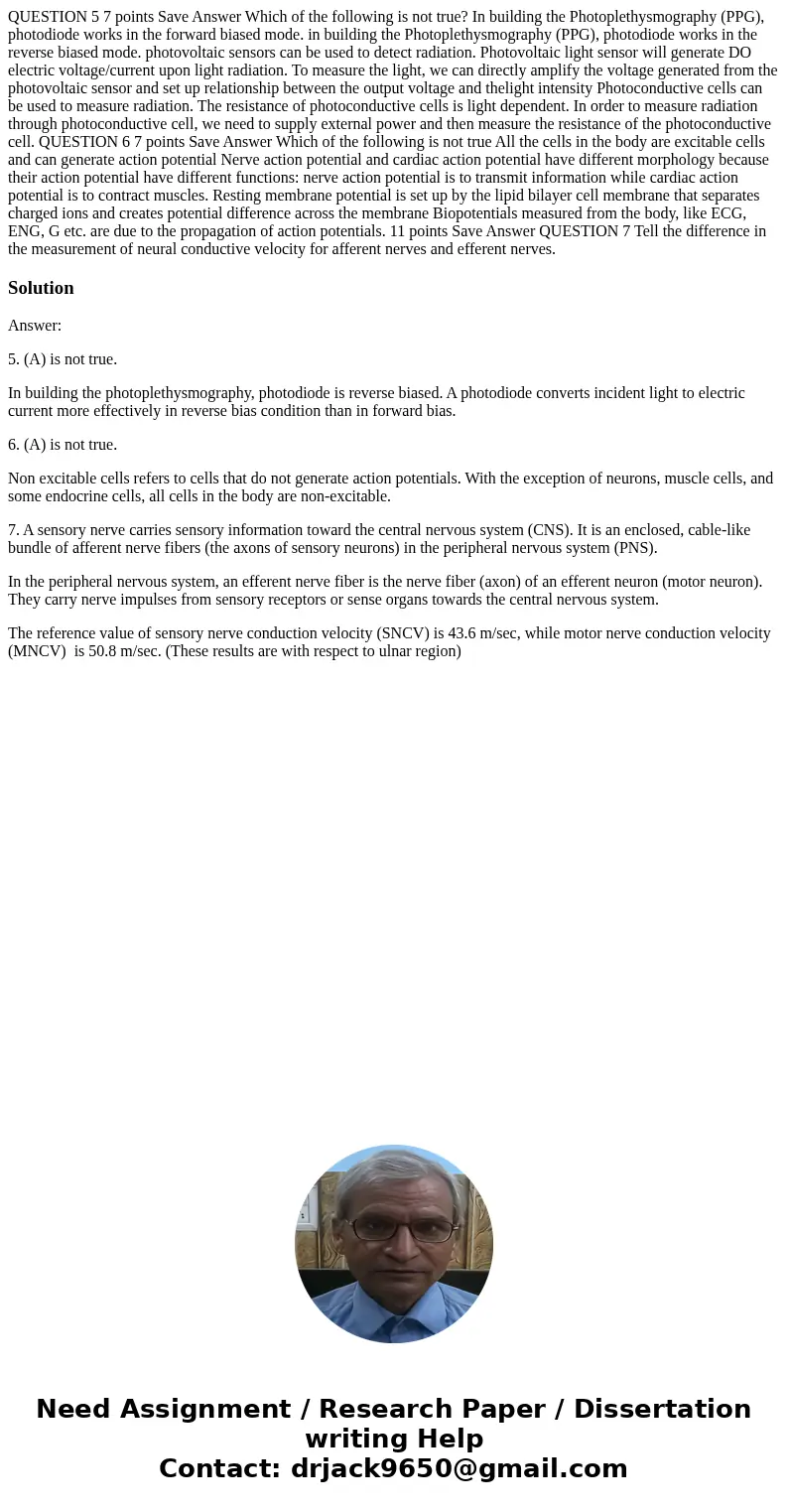QUESTION 5 7 points Save Answer Which of the following is not true? In building the Photoplethysmography (PPG), photodiode works in the forward biased mode. in building the Photoplethysmography (PPG), photodiode works in the reverse biased mode. photovoltaic sensors can be used to detect radiation. Photovoltaic light sensor will generate DO electric voltage/current upon light radiation. To measure the light, we can directly amplify the voltage generated from the photovoltaic sensor and set up relationship between the output voltage and thelight intensity Photoconductive cells can be used to measure radiation. The resistance of photoconductive cells is light dependent. In order to measure radiation through photoconductive cell, we need to supply external power and then measure the resistance of the photoconductive cell. QUESTION 6 7 points Save Answer Which of the following is not true All the cells in the body are excitable cells and can generate action potential Nerve action potential and cardiac action potential have different morphology because their action potential have different functions: nerve action potential is to transmit information while cardiac action potential is to contract muscles. Resting membrane potential is set up by the lipid bilayer cell membrane that separates charged ions and creates potential difference across the membrane Biopotentials measured from the body, like ECG, ENG, G etc. are due to the propagation of action potentials. 11 points Save Answer QUESTION 7 Tell the difference in the measurement of neural conductive velocity for afferent nerves and efferent nerves.
Answer:
5. (A) is not true.
In building the photoplethysmography, photodiode is reverse biased. A photodiode converts incident light to electric current more effectively in reverse bias condition than in forward bias.
6. (A) is not true.
Non excitable cells refers to cells that do not generate action potentials. With the exception of neurons, muscle cells, and some endocrine cells, all cells in the body are non-excitable.
7. A sensory nerve carries sensory information toward the central nervous system (CNS). It is an enclosed, cable-like bundle of afferent nerve fibers (the axons of sensory neurons) in the peripheral nervous system (PNS).
In the peripheral nervous system, an efferent nerve fiber is the nerve fiber (axon) of an efferent neuron (motor neuron). They carry nerve impulses from sensory receptors or sense organs towards the central nervous system.
The reference value of sensory nerve conduction velocity (SNCV) is 43.6 m/sec, while motor nerve conduction velocity (MNCV) is 50.8 m/sec. (These results are with respect to ulnar region)

 Homework Sourse
Homework Sourse